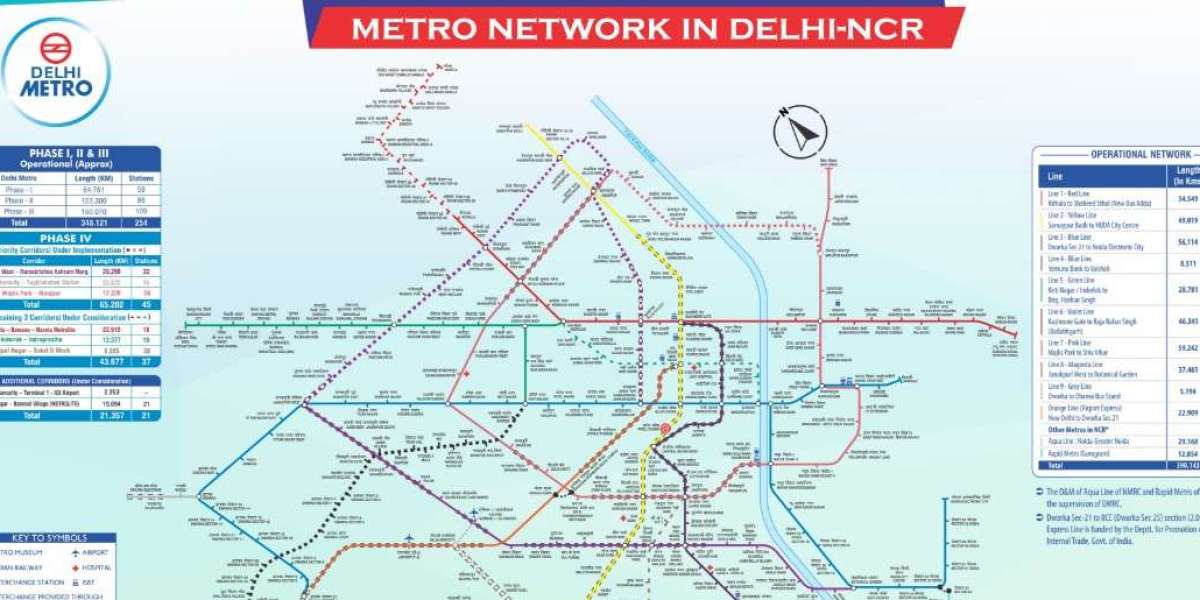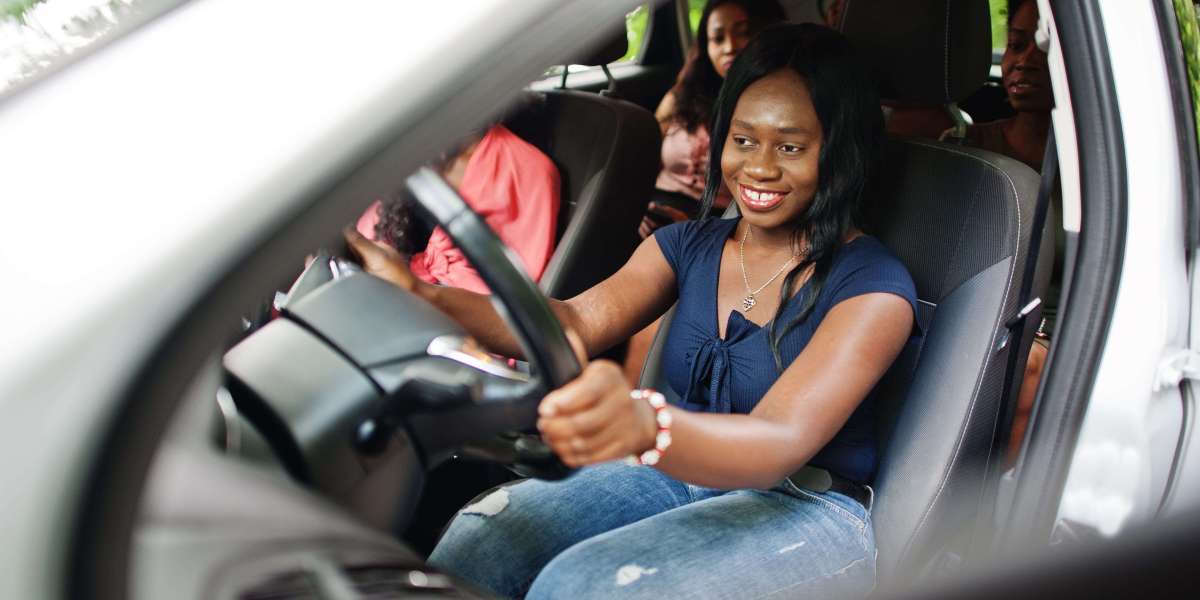The Delhi Metro Blue Line 2025 stands as a vital corridor in the city's rapid transit network. Stretching across diverse terrains, it connects key urban and suburban areas, facilitating efficient daily commutes and enhancing connectivity throughout the National Capital Region (NCR).
Route Overview of Delhi Metro Blue Line 2025
The Blue Line operates two primary routes:
Main Line: Extending from Dwarka Sector 21 to Noida Electronic City, this line traverses major hubs such as Rajouri Garden, Karol Bagh, Connaught Place, and Akshardham.
Branch Line: Connecting Yamuna Bank to Vaishali, this segment serves the eastern corridors of Delhi and parts of Ghaziabad.
This dual-route system ensures comprehensive coverage, linking residential zones with commercial and educational centers.
Comprehensive List of Stations on the Blue Line
The Blue Line encompasses over 50 stations, each strategically placed to serve densely populated and high-traffic areas. Notable stations include:
Dwarka Sector 21: Proximity to the Indira Gandhi International Airport and residential complexes.
Rajiv Chowk: A central interchange facilitating transfers to the Yellow Line, situated in the heart of Delhi.
Akshardham: Provides access to the renowned Akshardham Temple, attracting tourists and devotees alike.
Noida Sector 18: A commercial hub featuring shopping malls and entertainment centers.
Vaishali: Serves as a crucial link for commuters from Ghaziabad.
Each station is equipped with amenities designed to enhance passenger experience, including escalators, elevators, and clear signage.
Timings and Frequency of Trains
The Blue Line operates with a schedule tailored to meet the demands of daily commuters:
Weekdays: Services commence at 6:00 AM and conclude at 11:00 PM.
Sundays and Holidays: Operations begin at 8:00 AM, accommodating the reduced passenger flow.
Train frequency varies throughout the day:
Peak Hours: Trains arrive every 2 to 5 minutes, minimizing wait times.
Non-Peak Hours: Intervals extend to 7 to 10 minutes, balancing efficiency with demand.
This scheduling ensures that passengers experience timely and reliable service across the network.
Interchange Stations Enhancing Connectivity
The Blue Line integrates seamlessly with other lines in the Delhi Metro network, offering multiple interchange stations:
Rajiv Chowk: Connects with the Yellow Line, facilitating north-south travel.
Mandi House: Links to the Violet Line, providing access to cultural and historical sites.
Dwarka Sector 21: Intersects with the Airport Express Line, offering swift transit to the airport.
Noida Sector 52: Connects with the Aqua Line, extending reach into Greater Noida.
These interchanges enhance the network's flexibility, allowing passengers to navigate the city with ease.
Facilities and Amenities for Commuters
The Blue Line is designed with passenger comfort and convenience in mind:
Air-Conditioned Coaches: Ensuring a comfortable journey regardless of external weather conditions.
Accessibility Features: Stations and trains are equipped with ramps, elevators, and tactile paths to assist differently-abled individuals.
Contactless Travel: Smart cards and QR-code-based tickets streamline the boarding process.
Parking Facilities: Available at numerous stations, facilitating park-and-ride options for commuters.
These features collectively contribute to a user-friendly transit experience.
Safety Measures and Security Protocols
Passenger safety remains a top priority on the Blue Line:
CCTV Surveillance: Comprehensive monitoring across stations and trains deters misconduct and enhances security.
Emergency Helplines: Accessible at all stations and within trains, providing immediate assistance when needed.
Regular Patrols: Security personnel conduct routine checks to maintain a safe environment.
These measures ensure that passengers can travel with confidence throughout the network.
Impact on Urban Development and Mobility
The Blue Line has significantly influenced urban dynamics:
Reduced Traffic Congestion: By offering a reliable alternative to road transport, it alleviates pressure on major thoroughfares.
Economic Growth: Enhanced accessibility has spurred commercial activity and increased property values along the corridor.
Environmental Benefits: Encouraging public transport usage contributes to lower carbon emissions and improved air quality.
These factors collectively underscore the Blue Line's role in shaping a more sustainable and efficient urban landscape.
Future Developments and Expansion Plans
Looking ahead, the Delhi Metro Rail Corporation (DMRC) envisions further enhancements to the Blue Line:
Route Extensions: Plans are underway to extend services to emerging residential and commercial areas, including Greater Noida.
Infrastructure Upgrades: Modernization efforts aim to incorporate advanced technologies and improve station facilities.
Sustainability Initiatives: Implementing eco-friendly practices, such as solar-powered stations, to reduce environmental impact.
These initiatives reflect a commitment to continuous improvement and adaptation to the city's evolving needs.
Conclusion
The Delhi Metro Blue Line 2025 exemplifies efficient urban transit, offering comprehensive coverage, modern amenities, and a commitment to sustainability. Its ongoing development promises to further enhance connectivity and quality of life for residents and visitors alike.
For more information or inquiries, feel free to contact us.
Frequently Asked Questions
What is the starting and ending point of the Delhi Metro Blue Line 2025?
The main Blue Line begins at Dwarka Sector 21 and ends at Noida Electronic City, while a branch runs from Yamuna Bank to Vaishali.
How many stations are there on the Delhi Metro Blue Line 2025?
The Blue Line features over 50 stations across its main and branch corridors, covering key residential, commercial, and institutional zones.
What is the frequency of trains on the Blue Line during peak hours?
During peak hours, trains arrive every 2 to 5 minutes, ensuring quick and efficient movement for passengers.
Does the Blue Line connect with other metro lines?
Yes, the Blue Line offers multiple interchange points with the Yellow, Violet, Aqua, and Airport Express Lines, enhancing citywide connectivity.
Are parking facilities available at Blue Line stations?
Yes, many Blue Line stations provide parking areas, supporting a seamless park-and-ride commute.
Is the Blue Line accessible to differently-abled passengers?
Yes, all stations and trains include features like elevators, ramps, and tactile indicators for accessibility.
What safety measures are in place on the Blue Line?
The Blue Line includes CCTV surveillance, emergency helplines, and active patrolling to ensure passenger safety.
Can I travel contactless on the Delhi Metro Blue Line 2025?
Yes, the Blue Line supports smart cards and QR-code ticketing for fast and contactless access.
What are the operational hours of the Blue Line on weekends?
On Sundays and holidays, train services begin at 8:00 AM and continue until 11:00 PM.
Is the Blue Line expected to expand in the future?
Yes, DMRC plans to extend the Blue Line further to accommodate urban growth and improve connectivity in expanding regions.



